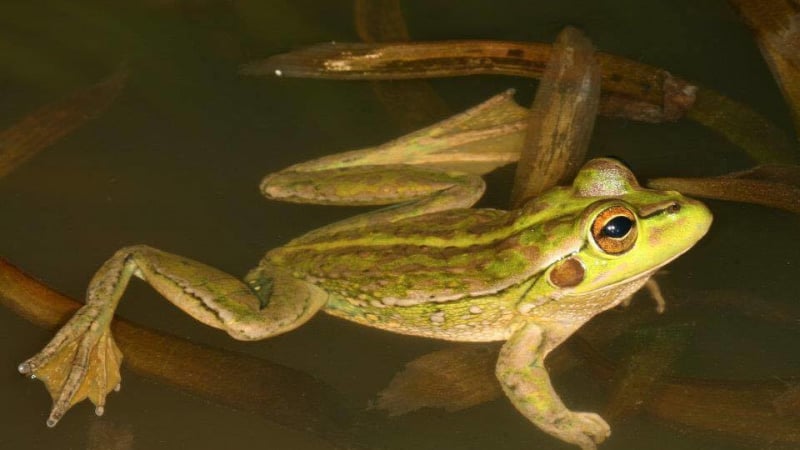Elected representatives in government are in charge of the policy and funding that can make or break saving threatened species. Their decisions and actions matter.
Riverina has or used to have 27 threatened animals within its boundaries. One of them is me, the Yellow-spotted Tree Frog.
We took care to attach appropriate images that are as close to representative of each species as our resources and the availability of images allowed. However, we could not ensure perfect accuracy in every case. Some images show species that share the same genus but not at the species or subspecies level.
Yellow-spotted Tree Frog
Litoria castanea
Status: Critically Endangered
The Environment Protection and Biodiversity Conservation Act 1999 (EPBC Act) lists threatened species under six categories:
Extinct, Extinct in the wild, Critically Endangered, Endangered, Vulnerable, Conservation dependent. Read more about these categories
Litoria castanea is found across 7 electorates.
The Yellow-spotted Bell Frog grows to 80 mm with large yellow or cream spots in the groin area and pale yellow spots and/or marbling on the lower hindlimbs. This species has completely webbed toes.¹
Explore more about this species on the Atlas of Living Australia



Explore more about the threats facing species on our Resources page.
- Curly-bark Wattle (Acacia curranii)
- Yass Daisy (Ammobium craspedioides)
- River Swamp Wallaby-grass (Amphibromus fluitans)
- Androcalva procumbens (Androcalva procumbens)
- Thick-leaf Star-hair (Astrotricha crassifolia)
- Austrostipa wakoolica (Austrostipa wakoolica)
- Mueller Daisy (Brachyscome muelleroides)
- Sand-hill Spider-orchid (Caladenia arenaria)
- Crimson Spider-orchid (Caladenia concolor)
- Black Gum (Eucalyptus aggregata)
- Wee Jasper Grevillea (Grevillea iaspicula)
- Tumut Grevillea (Grevillea wilkinsonii)
- Spiny Pepper-cress (Lepidium aschersonii)
- Winged Pepper-cress (Lepidium monoplocoides)
- Hoary Sunray (Leucochrysum albicans subsp. tricolor)
- Cotoneaster Pomaderris (Pomaderris cotoneaster)
- Tarengo Leek Orchid (Prasophyllum petilum)
- Turnip Copperburr (Sclerolaena napiformis)
- Slender Darling-pea (Swainsona murrayana)
- Red Darling-pea (Swainsona plagiotropis)
- Austral Toadflax (Thesium australe)
- Tylophora linearis (Tylophora linearis)
You are in federal electorate Riverina.
